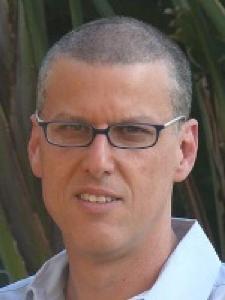Jan 11 2011
In recent years, developers have been investigating light-harvesting thin film solar panels made from nanotechnology –– and promoting efficiency metrics to make the technology marketable.
Now a Tel Aviv University researcher is providing new evidence to challenge recent "charge" measurements for increasing solar panel efficiency.
 This is Prof. Eran Rabani of Tel Aviv University.
This is Prof. Eran Rabani of Tel Aviv University.
Offering a less expensive, smaller solution than traditional panels, Prof. Eran Rabani of Tel Aviv University's School of Chemistry at the Raymond and Beverly Sackler Faculty of Exact Sciences puts a lid on some current hype that promises to increase efficiencies in thin film panels. His research, published recently in the journals Nano Letters and Chemical Physics Letters, may bring the development of new solar energy technologies more down to earth.
Prof. Rabani combines a new theoretical approach with computer simulations. "Our theory shows that current predictions to increase efficiencies won't work. The increase in efficiencies cannot be achieved yet through Multiexciton Generation, a process by which several charge carriers (electrons and holes) are generated from one photon," he says.
Inefficient as "charged"
But both new and existing theories bode well for the development of other strategies in future solar energy technology, he points out. Newer approaches published in journals such as Science may provide means for increasing the efficiencies of solar technology, and perhaps would also be useful in storage of solar energy, Prof. Rabani and his team of researchers believe.
A chemical physicist, Prof. Rabani investigates how to separate charges from the sun efficiently. In 2004, physicists suggested that more than one electron-hole pair could be pulled from one photon in a complicated process in semiconductor nanocrystals. If this were possible, the charge would be doubled, and so the solar energy efficiency would increase. "We've shown that this idea doesn't work," Prof. Rabani says.
One step closer to marketing the sun
The development of more efficient and less expensive devices to make use of solar energy is one of the greatest challenges in science today. Billions of dollars are being spent to find the best methods to collect electron "charges" from the sun.
Typically, one photon from the sun absorbed in a thin film solar panel can excite one electron-hole pair, which is then converted to electricity. Currently there are claims that if more electron-hole pairs can be excited after the photon is absorbed, a larger fraction of the photon energy can successfully be converted into electricity, thus increasing device efficiency.
The theory that Prof. Rabani developed with his Israeli colleagues shows why this process is not as efficient as originally conceived. It's bad news for panel producers looking to create more efficient solar panels, but good news for researchers who are now free to look to the next realistic step for developing a technology that works.
Prof. Rabani is now on sabbatical at the University of California, Berkeley as a Miller Visiting Professor.
Source: http://www.aftau.org/